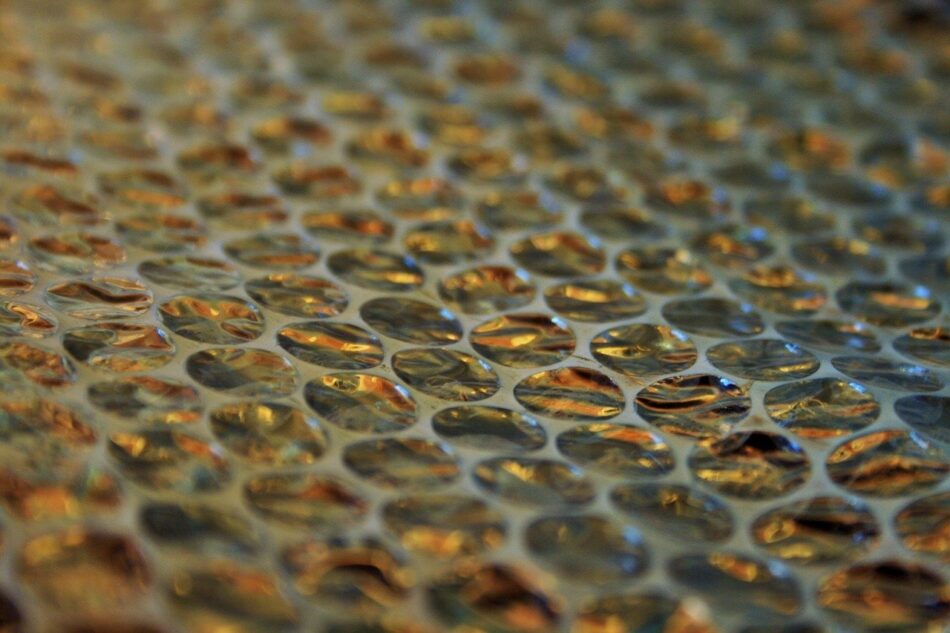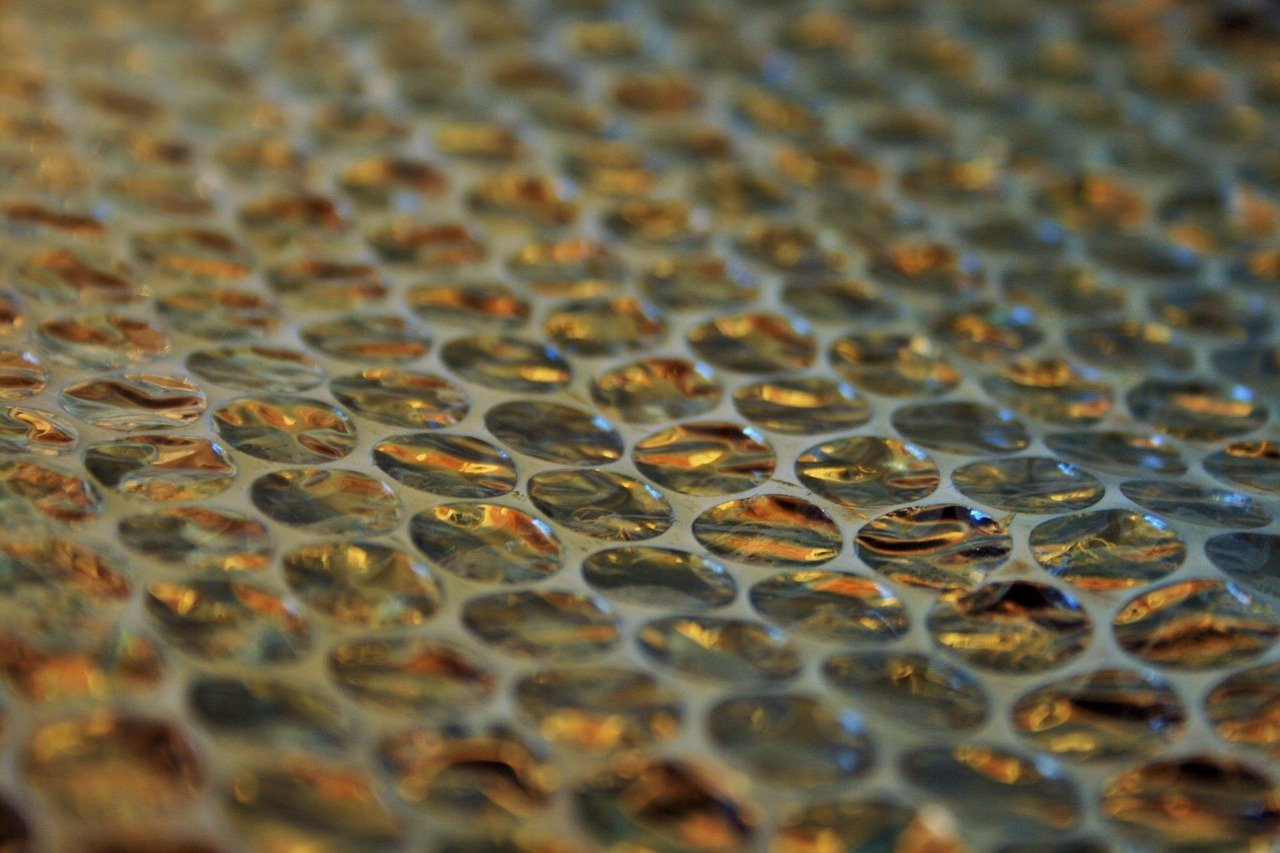Rubbish Removal and Clutter Clearing Tips When Moving House
Moving house is exciting and offers an opportunity to get rid of lots of rubbish. Use these tips to clear your home and dispose of rubbish responsibly.

Since its invention in 1957, bubble wrap has been used for many commercial purposes. It’s typically used in packaging, or to protect fragile items during transportation or storage, by providing them with appropriate cushioning. However, it has also been used for gardening, home insulation and is even featured in the museum of modern art.
Its continuous popularity means it’s remained in constant demand. In fact, it’s estimated that around 240,000 miles of bubble wrap are produced each year in the UK alone. While bubble wrap recycling is possible, many consumers fail to realise this, meaning it’s often sent to landfill instead of the appropriate recycling facility.
As a result, whether you use bubble wrap when running your business or in daily life, you must dispose of the materials safely and appropriately. Discover everything you need to know about bubble wrap recycling in this guide.

When disposed of alongside your general waste, bubble wrap will likely end up in landfill. In these instances, it can take upwards of 500 years to completely decompose. As a result, disposing of bubble wrap through this channel is incredibly detrimental to the environment, contributing significantly to climate change and global warming.
Recycling bubble wrap is the best way to dispose of it. One of the biggest misconceptions is the idea that you can’t recycle bubble wrap. It’s a myth that likely stems from the fact that LDPE can be difficult to recycle because soft films such as bubble wrap can occasionally clog machinery.
Business owners must take full responsibility for any bubble wrap used within their daily operations and ensure its disposal is part of their waste management plan.
Bubble wrap is made from low-density polyethylene (LDPE), which means it’s a form of plastic waste. It’s typically formed from tiny beads of resin that have different properties. LDPE is a durable yet highly malleable plastic, which means it’s very flexible and often used to create plastic films such as bubble wrap, sandwich bags, and clingfilm.
The process of making bubble wrap is relatively straightforward:
To start, the resin beads are gradually heated until they combine into a thin film.
This film is rolled until it’s flat, and small holes are made throughout the film at regular intervals.
A vacuum is then used to fill the holes with air, creating bubbles.
The bubble wrap is then cut to size.
Bubble wrap is recyclable. It’s made from LDPE plastic, which is the same material used to create plastic carrier bags. You can recycle bubble wrap alongside plastic bags in designated carrier bag recycling bins found in many large supermarkets.
The process to recycle bubble wrap is trickier as the thin, soft films can clog machinery typically used to recycle plastic waste. Place it in an appropriate plastic recycling bin and ensure your waste goes to the relevant waste management plant where bubble wrap recycling takes place. This avoids it going in with general waste and ending up in landfill or being incinerated.
When disposing of bubble wrap, you must store it separately from the rest of your waste. For example, it should not be stored with your dry mixed recycling or plastic waste. At Business Waste, we can provide you with a range of free bins to store waste bubble wrap safely and securely before collection, helping the recycling process run smoothly.
For households, you cannot put bubble wrap in your domestic recycling bin. Rather than throwing it away in your general waste bin, if you’re looking to dispose of bubble wrap used within your home then you can find specialist bins and collection points at local supermarkets and shopping centres.
Bubble wrap is usually recycled through the use of specialised machinery, designed to break LDPE into smaller, more manageable pieces. Once broken down, the pieces are turned into small pellets through a process known as compounding. The pellets can then be turned into a variety of products such as:
Bin bags/bins
Furniture
Flooring
Pipes
This is an excellent example of closed-loop recycling. However, part of the difficulty associated with disposing of bubble wrap and LDPE is that it could be contaminated depending on the materials it has come into contact with. As a result, you should ensure you clean the product where possible and remove any labels. Bubble wrap should also be popped before disposal.
While you must recycle bubble wrap, there are also plenty of ways you can re-use it ahead of time. For example, bubble wrap can be used to:
Keep your plants or compost insulated during the winter months.
Prevent items such as plates or glasses from scratching.
Add extra insulation throughout your home, including window insulation.
While there are many benefits of using bubble wrap for packaging, not everywhere has the space or resources to store and recycle it. Instead, there are plenty of alternatives to bubble wrap that are even more eco-friendly. Consider an alternative to bubble wrap such as:
Packing paper
Old or disused fabric
Shredded paper or card
Recycled bubble wrap
Compostable products
Starch-based packing peanuts
While there are many benefits of using bubble wrap for packaging, not everywhere has the space or resources to store and recycle it. Instead, there are plenty of alternatives to bubble wrap that are even more eco-friendly. Consider an alternative to bubble wrap such as:
Packing paper
Old or disused fabric
Shredded paper or card
Recycled bubble wrap
Compostable products
Starch-based packing peanuts
Do you ever feel less stressed after popping bubble wrap? Well, there’s a reason for it, alongside some other fun facts about bubble wrap:
In 1992, a study was carried out by psychologist Kathleen Dillon that found that subjects felt more relaxed and less tired after spending time popping bubble wrap.
LDPE products such as bubble wrap can take up to 1,000 years to decompose naturally.
The world record for the number of people popping bubble wrap at the same time is 2,681 – set in 2015.
While bubble wrap is now used almost exclusively for packaging, creators Alfred Fielding and Marc Chavannes were actually trying to create a form of textured Wallpaper.
Each year, enough bubble wrap is created globally to cover the distance between the earth and the moon.
The 27th of January is National Bubble Wrap Day.
At Business Waste, we’re always on hand to help with your waste disposal needs – whether that relates to bubble wrap recycling or getting rid of hazardous waste such as chemicals. We provide you with the appropriate bins and storage containers, and will also work closely with you to put together a waste management and collection plan that meets your needs.
When trusting Business Waste to dispose of your bubble wrap, you can rest easy knowing that we have access to a range of specialist equipment and recycling facilities and treat landfill as an absolute last resort. For more information and a free quote – get in touch today. We look forward to hearing from you!
Get a fast FREE quote for your bubble wrap waste
Moving house is exciting and offers an opportunity to get rid of lots of rubbish. Use these tips to clear your home and dispose of rubbish responsibly.
Thinking about starting a zero waste store? You’ll need a solid plan and the right equipment. Read this guide for tips when setting up a zero waste shop.